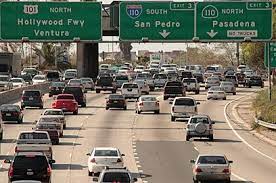What City Observatory did this week
A universal basic income . . . for cars. One of the most widely discussed alternatives for tackling poverty and inequality head on is the idea of a “Universal Basic Income”–a payment made to every household to assure it had enough for basic living expenses. While there have been a few experiments and a lot of political hyperbole, it hasn’t really been tried at scale. But now, California is on the verge of enacting a Universal Basic Income, but instead of being for people, its for cars. California Governor Gavin Newsom has proposed giving a $400 debit cards to every California households based on whether they own one or two cars. It’s a symptom of our deep car dependence thant faced with somewhat higher gas prices (still lower, in inflation-adjusted terms than a decade ago), politicians are falling all over themselves to insulate cars and driving from their real costs.

It speaks volumes that we’re so quick to allocate resources to cars and so reticent to have similar energy when it comes to tackling poverty.
Must read
Darrell Owens on exclusionary zoning for poor neighborhoods. California is wrestling with statewide efforts to end apartment bans and allow more housing to be built where people want to live. One subtext of this debate is an argument that upzoning ought to be restricted to higher income and predominantly white neighborhoods, and that lower income neighborhoods, especially those with a substantial population of color, ought to be exempted. There’s a kind of historical symmetry to this argument: it’s typically been the case the higher income white neighborhoods have used density restrictions to bar development, with the result that housing demand pressures get displaced to lower income neighborhoods. But as Darrell Owens points out claims that we’re doing these “sensitive” neighborhoods any favors by limiting upzoning is a fundamental mistake. Precluding upzoning in lower income neighborhoods would just tend to intensify gentrification pressures in those areas:
. . . the only thing single-family zoning does anyhow is preserve a lot of old houses for buyers who want single-family dwellings. Rich people consume a lot of space and energy, a lot more than working class people, so single-family houses will always be the most appealing to them. Keeping only inefficient, single-family homes in poor areas while densifying affluent ones would just focus wealthy demand for that housing in those poorer communities anyhow—likely exacerbating gentrification.
As we’ve pointed out before, there’s an assumption that if a neighborhood doesn’t allow change in its housing stock, that it will somehow remain affordable, when in fact, limiting supply has exactly the opposite effect.
More climate denial on I-5. As regular City Observatory readers will know, we’ve closely followed the devastating climate impacts that will arise from planned widenings of I-5 in the Portland Metro area. Between Tacoma and Olympia, the Washington Department of Transportation is pursuing another freeway widening project, one which will widen the roadway across the Nisqually Delta at the South end of Puget Sound. Ryan Packer, writing at The Urbanist shows that despite studies showing that alternative land use policies that would reduce vehicle travel are a more environmentally sound option. Widening I-5 would raise greenhouse gas emissions by more that 2 percent, while better land use would reduce them by more than 1 percent. WSDOT is pushing forward with a widening project that would cost billions, and increase greenhouse gases, in large part because it a strategy focused on land use changes wouldn’t allow it to be the lead agency in the NEPA review
Another Exploding Whale for the Oregon Department of Transportation. Highway megaprojects routinely blow through their announced budgets. A proposal to rebuild and widen the I-205 Abernethy Bridge south of Portland has just seen its budget increased by nearly 40 percent. This is nothing new for the Oregon Department of Transportation, which has ultimately ended up recording 100 percent cost-overruns for virtually all of the megaprojects it has undertaken in the past two decades. Just last year, ODOT said the project would cost $375 million. Bids for construction came in higher than expected, and have ballooned the project’s cost to $500 million.
The miscalculation is ominous for two reasons: It suggests that either ODOT low-balled the cost estimate just nine months ago, or that the inflation of construction costs is soaring out of control. Either way, that should give leaders reasons to doubt claims that ODOT is making about its estimates for other billion dollar plus projects. And how will these cost overruns be paid for: Either other projects and priorities will be short-changed, or I-205 users will have to pay even higher tolls, or both.

